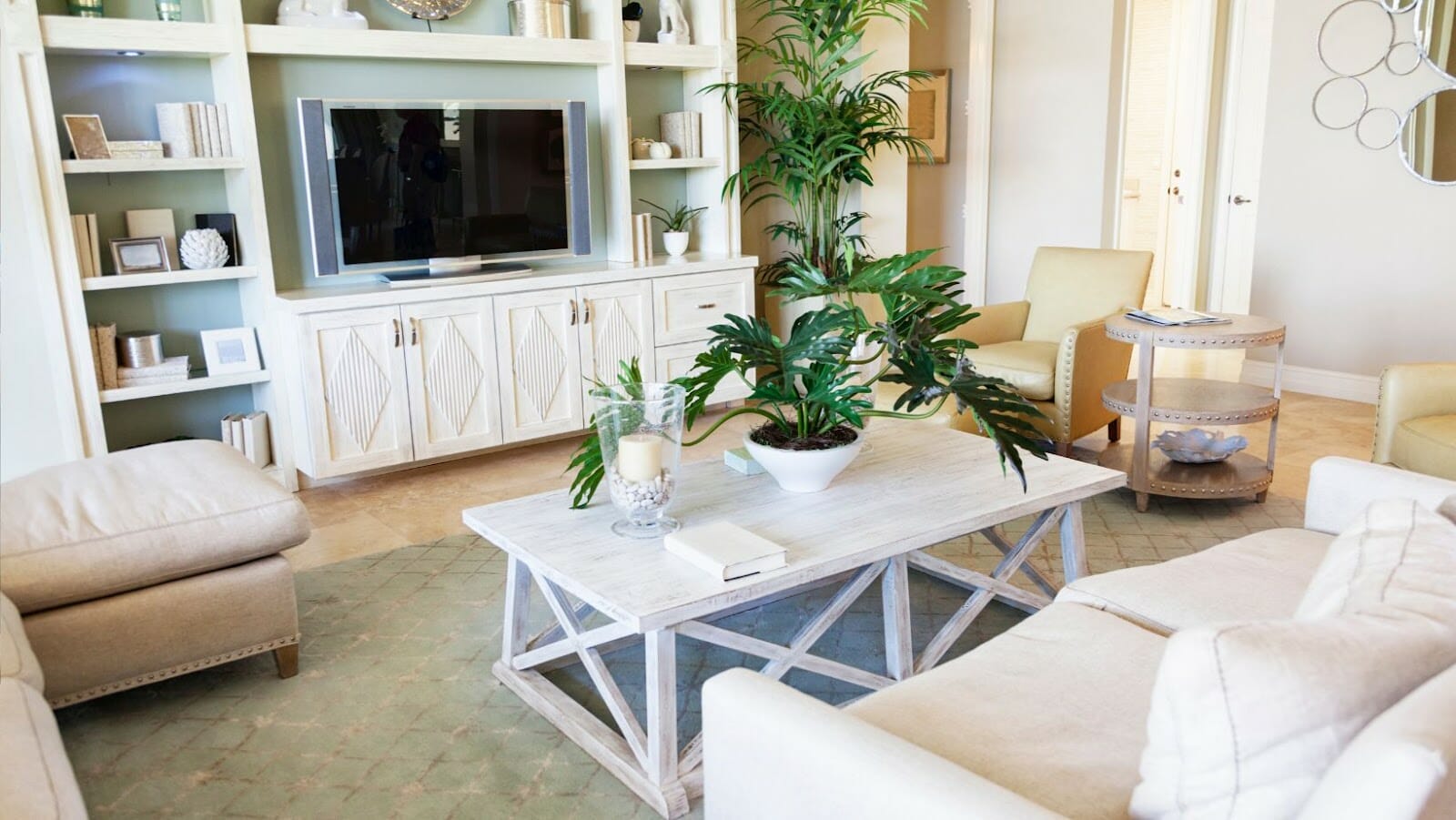
The interior affects a person with color, shape, logistics, sounds, and smells – in a complex way, regardless of whether a person is awake or sleeping. In a healthy interior, a person feels as comfortable as possible, recovers quickly, is in a good mood, is full of strength and energy, is self-confident, and feels protected. He has no desire to change, rearrange, or go somewhere, for example, to the country: in his interior, he receives everything necessary for happiness and health.
You can create a healthy interior yourself, without a designer, if you do it in a calm and relaxed state, without haste, in no case in stressful situations. A great way to start is by saying a simple smudging prayer to remove negative energy from home.
How Colours and Objects in The Interior Affect a Person
Colours and objects necessarily have some influence. Colour is an electromagnetic wave. But for each person, the influence of form, colour, smells, and sounds is individual at the level of his individual physiology.
Entire teams of scientists and practitioners are studying the effect of colour on health, and this knowledge is collected in a wonderful collective author’s monograph, “Colour Light Therapy”, it also contains a list of diagnoses and recommended shades for colour therapy.
The same diagnosis can be treated with different colours, and the same colour can be recommended for different diagnoses, and in 80% of cases, in addition to the main colour, it is recommended to choose a neutralising opposite for a shorter, calming effect.
It is possible to determine exactly what colour, in what volume and what intensity is shown to an individual with special medical equipment, which is what specialists do when they are asked to create a therapeutic interior. They come with a client to a doctor who, like us, knows how to use such equipment, jointly carry out special diagnostics and identify the necessary shades, which they then recommend to use in the interior according to our method.
Sometimes a client asks for a correction of an already existing interior, and specialists diagnose his health in relation to this interior, looking at what is superfluous and what needs to be brought in. Skewed towards one colour in the existing interior indicates health problems for the one who chose this colour.
Interior therapy is not limited to coloristic problems. Form affects us much more, so the necessary correction can be done, for example, by changing the shape of objects or the configuration of rooms, choosing the most suitable furniture from reputable brands like the best collections of hamptons furniture in Australia.
How “Things-parasites” Affect our Health
A “parasite thing” is an interior element (the interior itself can also be a “parasite thing”) that destructively affects the health, well-being and happiness of an individual, destroys his personality, worsens his social status, changes his fate according to a negative scenario up to lethal outcome.
A “parasite thing” can appear in a person in different ways:
● be acquired in a state of stress, depression, in a bad mood;
● be acquired under the influence of public opinion, trends, and advertising;
● be acquired in a state of temporary and non-critical change in physiological states, such as a cold or pregnancy;
● also, “things-parasites” that carry the symptoms of diseases of previous generations are inherited.
● In simple words, anything in the interior, like the interior itself, as a whole, can be the very “parasite thing”: paint on the walls, a handle on the door, an antique chest of drawers, a patchwork bedspread, an unnecessary gift.
The Influence of The Interior on The Psyche
When designers talk about the influence of the interior, they are talking about what happens outside of our conscious perception: the influence of color and shape at different levels. These are small items, large ones, walls, and logistics; we just live with them, as a rule, without concentrating conscious attention on the interior and its elements. About the influence of those smells that evoke, for example, deep memories, those sounds that create a noise image of the house, without which we see the room, or rather “hear” uninhabited and uncomfortable.
Each room has its own basic rules. In particular, the bed in the bedroom should be located so that a person feels as secure as possible during sleep.
Interior therapy, ideally, involves working with a doctor, which means that the interior will eventually be made for a specific client with an individual list of diagnoses. A person provides us with diagnoses, and we, based on them, create a suitable interior for him.

Mistakes in The Interior That can Affect Human Health
Black ceiling, white or very light floor, bright and overly colourful rooms for newborns, narrow dark corridors with many turns and the scourge of our typical housing construction – small bathrooms and bathrooms without fresh air, as well as small kitchens, where it is difficult to make zoning on work and dining area for a relaxing meal.
All of the above do not correspond to the basic physiological settings of the human body. There are no absolutely bad or absolutely good interiors. The interior should be comfortable for the specific people living in it. There are generally basic recommendations based, among other things, on a psychogenetic predisposition.













